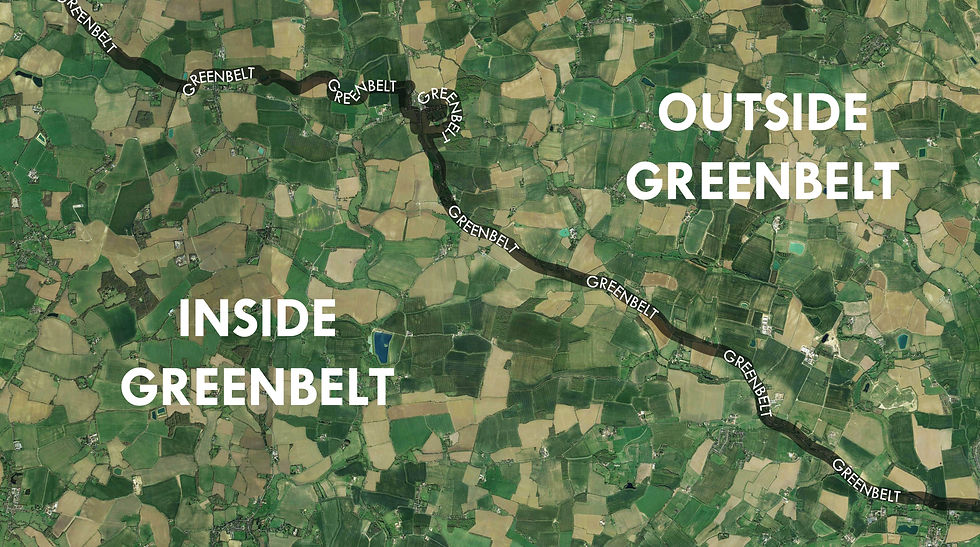Same Homes, Different context: Dorset
- Benjamin Nourse

- Jul 14, 2018
- 2 min read
I visited ‘Woodberry Copse’, a new developer estate in Lyme Regis, as a parallel study to the landscapes I’ve previously visited in Essex. This text does not profess admiration nor revulsion for this estate, rather to analyse it in a local and national context.
Comparatively, the design, material, and build quality of this estate was almost identical to new estates I have seen by the same developer in Essex. How is it that same houses are being built in Essex and Dorset 200 miles away?

Architectural context
Woodberry Copse is not offensive or intrusive in its location or design, and probably provides an adequate level of homeliness for the occupants. Architecturally the developer’s website states that the ’homes have been inspired by the arts and crafts style architecture that is so typical of this area’, which is both arguably vague and untrue both in the product output, and importance of the arts and crafts in Lyme Regis. Rather the success of the estate is attributed to its surrounding landscape – located on an ancient hill besides the sea.

Material context
In terms of materials, the geological and natural resources are vastly different. Lyme Regis is close to the Tees-Exe line thus it is nearby geologically ancient Rocks, so local vernacular is dominantly composed of stone and timber weatherboard, whereas Essex is famous for its clay, thus London clay brick buildings are the dominant vernacular material. The likelihood is that the materials for Woodberry Copse, namely red brick, white render, and PVC windows, are from the same source, then distributed by the developer across the county. Like Andy Warhol’s repeated Coca-Cola prints, developer homes are a product of capitalism, and the result is a nationally consistent build quality and material landscape. However, unlike coke not everyone can afford to buy a home.
In 1955, Ian Nairn famously coined the phrase ‘subtopia’, a term referring to the suburban monotnonisation of English landscapes. At the townscape scale, late-Victorian and post-war mass developments (which Nairn was referring to) were formed of repetitive bylaw housing, creating tedious local landscapes in which everything looked the same. However, in 2018 during the ‘UK housing crisis’ the issue has altered, following the creation of design guides including the 1973 Essex Design Guide. In local context, the Woodberry Copse housing estate is adequately varied in terms of design, material, size, and arrangement. However, in a national context, this development is supporting a nation-wide homogenisation of the English landscape. Moreover, the repetition is almost exact nation-wide, including regions with no local vernacular similarities.
The development market is dominated by a handful of private companies, and the planning system is not legally strong enough defend local landscapes. The problem is not ugly buildings, nor is it a rise of a national style, rather it is the sprawl of the exact copy. Since Nairn, the situation has escalated from mere ugliness, to cultural and environmental degradation. This threat to the landscape is not attributed to rising populations nor immigration but simply lack of design fashioned by a capitalist culture.








Comments